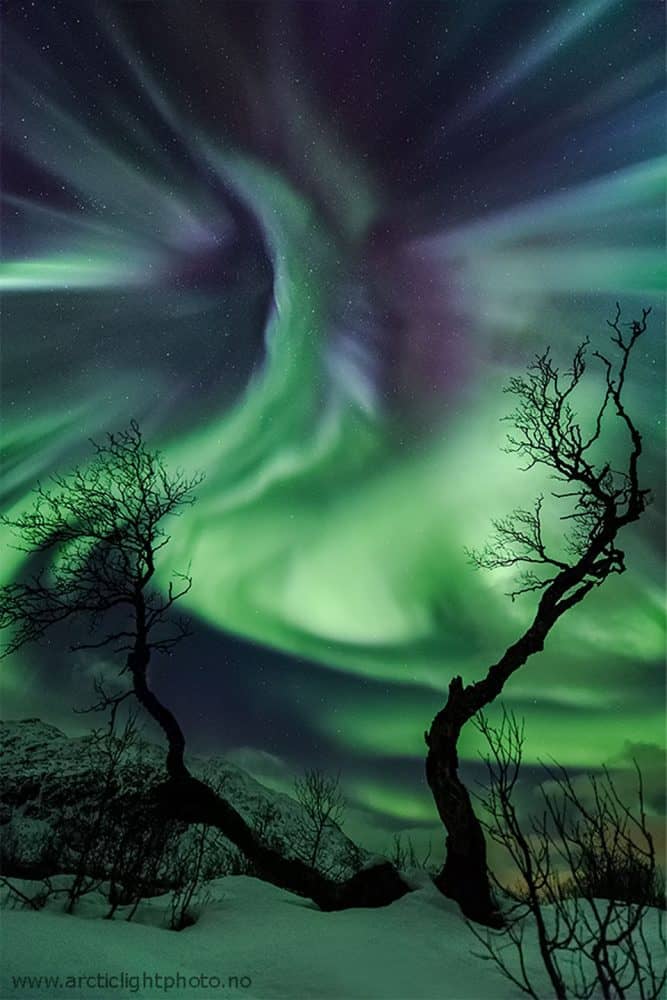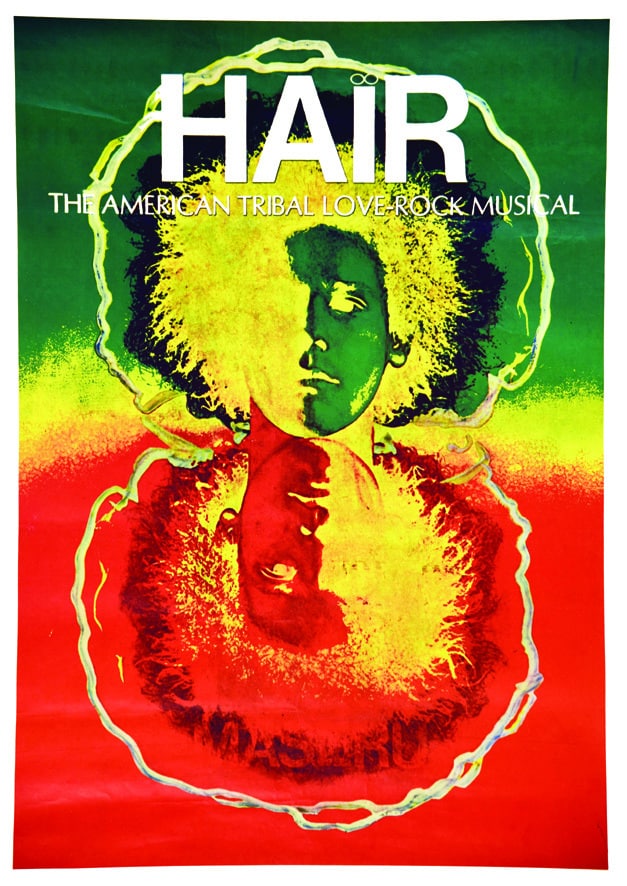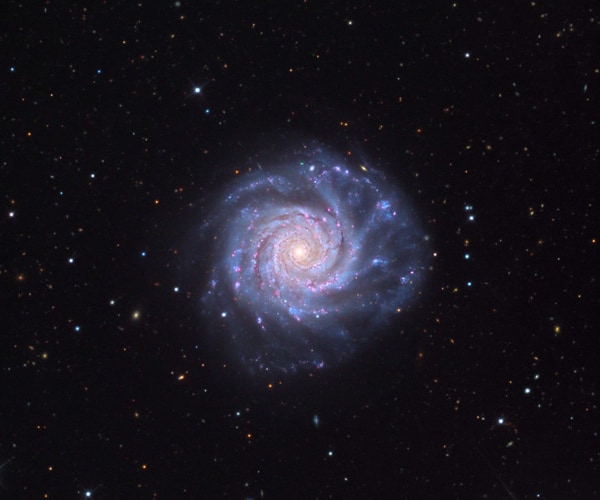Blog
It was Halloween and the sky looked like a creature. Exactly which creature, the astrophotographer was unsure but (possibly you can suggest one). Exactly what caused this eerie apparition in 2013 was sure: one of the best auroral displays in recent years. This spectacular aurora had an unusually high degree of detail. Pictured here, the vivid green and purple auroral colors are caused by high atmospheric oxygen and nitrogenreacting to a burst of incoming electrons. Birch trees in Tromsø, Norway formed an also eerie foreground. Recently, new photogenic auroras have accompanied new geomagnetic storms.
more...Cindy Blackman Santana (born November 18, 1959), sometimes known as Cindy Blackman, is an American jazz and rock drummer. Blackman has recorded several jazz albums as solo act and has performed with Pharoah Sanders, Sonny Simmons, Ron Carter, Sam Rivers, Cassandra Wilson, Angela Bofill, Buckethead, Bill Laswell and Joe Henderson. She was influenced early in her career by seeing Tony Williams perform. In 1997 she recorded the instructional video Multiplicity. “To me, jazz is the highest form of music that you can play because of the creative requirements”, says Blackman. Blackman is married to rock guitarist Carlos Santana.
Donald Eugene Cherry (November 18, 1936 – October 19, 1995) was an American jazz trumpeter. Noted for his long association with saxophonist Ornette Coleman, which began in the late 1950s, Cherry was a pioneer in world fusion music in the 1960s.
Cherry was born in Oklahoma City, Oklahoma, where his father (who also played trumpet) owned the Cherry Blossom Club, which hosted performances by Charlie Christian and Fletcher Henderson.In 1940, Cherry moved with his family to Los Angeles, California. He lived in the Wattsneighborhood, and his father tended bar at the Plantation Club on Central Avenue, which at the time was the center of a vibrant jazz scene. Cherry recalled skipping school at Fremont High School in order to play with the swing band at Jefferson High School. This resulted in his transfer to Jacob Riis High School, a reform school, where he first met drummer Billy Higgins.
By the early 1950s Cherry was playing with jazz musicians in Los Angeles, sometimes acting as pianist in Art Farmer‘s group. While trumpeter Clifford Brown was in Los Angeles with Max Roach, Cherry attended a jam session with Brown and Larance Marable at Eric Dolphy‘s house, and Brown informally mentored Cherry. He also toured with saxophonist James Clay.
more...Hank Ballard (born John Henry Kendricks; November 18, 1927 – March 2, 2003) was a rhythm and blues singer and songwriter, the lead vocalist of Hank Ballard and the Midnighters and one of the first rock and roll artists to emerge in the early 1950s. He played an integral part in the development of the genre, releasing the hit singles “Work With Me, Annie” and answer songs “Annie Had a Baby” and “Annie’s Aunt Fannie” with his Midnighters. He later wrote and recorded “The Twist” which spread the popularity of the dance and was notably covered by Chubby Checker. He was inducted into the Rock and Roll Hall of Fame in 1990.
Born John Henry Kendricks in Detroit, Michigan, he and his brother, Dove Ballard, grew up and attended school in Bessemer, Alabama, after the death of their father.[citation needed] He lived with his paternal aunt and her husband, and began singing in church. His major vocal inspiration during his formative years was the “Singing Cowboy”, Gene Autry, and in particular, his signature song, “Back in the Saddle Again“.[3] Ballard returned to Detroit in his teens and later worked on the assembly line for Ford.
more...Tone Hulbækmo (born 1957), from Tolga in Østerdalen, is a vocalist with broad repertoire, ranging European medieval and renaissance music to Norwegian folk modern songs. She bases her vocal style on old traditions of Østerdalen that she has modernized and given personal twist. She is also active as an instrumentalist, composer arranger.
more...The Tarantula Nebula, also known as 30 Doradus, is more than a thousand light-years in diameter, a giant star forming region within nearby satellite galaxy the Large Magellanic Cloud. About 180 thousand light-years away, it’s the largest, most violent star forming region known in the whole Local Group of galaxies. The cosmic arachnid sprawls across this spectacular view, composed with narrowband filter data centered on emission from ionized hydrogen atoms. Within the Tarantula (NGC 2070), intense radiation, stellar winds and supernova shocks from the central young cluster of massive stars, cataloged as R136, energize the nebular glow and shape the spidery filaments. Around the Tarantula are other star forming regions with young star clusters, filaments, and blown-out bubble-shaped clouds. In fact, the frame includes the site of the closest supernova in modern times, SN 1987A, left of center. The rich field of view spans about 1 degree or 2 full moons, in the southern constellation Dorado. But were the Tarantula Nebula closer, say 1,500 light-years distant like the local star forming Orion Nebula, it would take up half the sky.
more...Harold Eugene “Gene” Clark (November 17, 1944 – May 24, 1991) was an American singer-songwriter and founding member of the folk rock band the Byrds. He was the Byrds’ principal songwriter between 1964 and early 1966, writing most of the band’s best-known originals from this period, including “I’ll Feel a Whole Lot Better“, “She Don’t Care About Time“, and “Set You Free This Time“. Although he did not achieve commercial success as a solo artist, Clark was in the vanguard of popular music during much of his career, prefiguring developments in such disparate subgenres as psychedelic rock, baroque pop, newgrass, country rock, and alternative country.
Clark was born in Tipton, Missouri, the third of 13 children in a family of Irish, German, and American Indian heritage. His family moved to Kansas City, Missouri, where as a boy he began learning to play the guitar and harmonica from his father. He was soon playing Hank Williams tunes as well as material by early rockers such as Elvis Presley and the Everly Brothers. He began writing songs at the age of 11. By the time he was 15, he had developed a rich tenor voice, and he formed a local rock and roll combo, Joe Meyers and the Sharks. Like many of his generation, Clark developed an interest in folk music because of the popularity of the Kingston Trio. When he graduated from Bonner Springs High School, in Bonner Springs, Kansas, in 1962, he formed a folk group, the Rum Runners.
https://www.youtube.com/watch?v=OjU1f1vujbg
more...November 17, 1955-September 2, 2015
Phil began performing at an early age: A picture that hung in his parents’ house showed him in a straw hat, striped coat and cane at age four in the lead role for his school play.
Born in Dallas, Parnell started taking piano lessons at age five. At age eight the family moved to New Orleans. His interest in piano came from his mother, who played in church and at home.
 Parnell became obsessed with jazz after hearing John Coltrane. Before long, he was inspired to follow a musical career by listening to many others, including Art Tatum, Oscar Peterson, Charlie Parker, Bill Evans, James Booker, Dr. John and Ray Charles. “I was working for a painting contractor after school,” Parnell said. “I used to bring a boom-box cassette player with all my favorite jazz and it would drive the rest of the crew mad after a while. I was always doing something different from the other kids— usually solitary endeavors. I learned to ride a unicycle and to juggle,
Parnell became obsessed with jazz after hearing John Coltrane. Before long, he was inspired to follow a musical career by listening to many others, including Art Tatum, Oscar Peterson, Charlie Parker, Bill Evans, James Booker, Dr. John and Ray Charles. “I was working for a painting contractor after school,” Parnell said. “I used to bring a boom-box cassette player with all my favorite jazz and it would drive the rest of the crew mad after a while. I was always doing something different from the other kids— usually solitary endeavors. I learned to ride a unicycle and to juggle,
and was into trampoline, diving, gymnastics and art.”
As a teenager, Parnell studied piano with Ellis Marsalis. His son Joplin remembers, “Dad would often tell me the story of Ellis asking him to transcribe a song of his choice as homework. He brought back his attempts at transcribing Coltrane’s “Giant Steps,” which earned him a good deal of respect from his teacher for being so ambitious.
more...David Werner Amram III (born November 17, 1930) is an American composer, conductor, multi-instrumentalist, and author. As a classical composer and performer, his integration of jazz (including being one of the first noted as an improvising jazz French hornist), folkloric and world music has led him to work with the likes of Dizzy Gillespie, Lionel Hampton, Willie Nelson, Langston Hughes, Charles Mingus, Pepper Adams, Levon Helm, Betty Carter and Jack Kerouac.
Along with Julius Watkins, Amram is considered a pioneer of jazz French horn. He also plays piano, numerous flutes and whistles, percussion, and dozens of folkloric instruments from 25 countries, as well as being an improvisational lyricist. Since working with Leonard Bernstein, (who chose him as The New York Philharmonic’s first composer-in-residence in 1966), he has been one of BMI‘s twenty most performed composers of concert music of the last thirty years.
more...I got hired for the accompaniment ensemble performing; HAIR American tribal love rock musical
Performed by those who lived it! And some of us who still live it!
Mixed Blood Theater and Theater 55 (http://theatre55.org/current-projects/)
January 31st thru February 10th 2019 in Minneapolis
Friday 11-16-18 730pm
more...NGC 3938 is an unbarred spiral galaxy in the Ursa Major constellation. It was discovered on 6 February 1788 by William Herschel. It is one of the brightest spiral galaxies in the Ursa Major South galaxy group, and is roughly 67,000 light years in diameter. It is approximately 43 million light yearsaway from Earth. NGC 3938 is classified as type Sc under the Hubble sequence, a loosely wound spiral galaxy with a smaller and dimmer bulge.The spiral arms of the galaxy contain many areas of ionized atomic hydrogen gas, more so towards the center.
Two supernovae have been identified within NGC 3938. SN 2005ay is a type II supernova that was discovered on 27 March 2005 and had a magnitude of 15.6. SN 2017ein is a type Ic supernova that was discovered on 25 May 2017 and peaked at magnitude 14.9.
more...Allison Louise Crowe (born November 16, 1981) is a Canadian singer, songwriter, guitarist, and pianist born in Nanaimo, British Columbia, whose home is Corner Brook, Newfoundland and Labrador.
Crowe began performing professionally in 1996 at the age of fifteen, doing regular sets in coffee-houses and bars of Vancouver Island. Her recording debut came in 2001 with the EP Lisa’s Song + 6 Songs. Her first full-length albums, Secrets and Tidings, were released in 2004. (Tidings was originally released in EP form in 2003.) Allison Crowe: Live at Wood Hall, a double concert album, was released in July 2005.
Of Scottish, Irish, and Manx descent, Crowe grew up surrounded by jazz, classical music, and rock. She discovered additional influences, such as Ani DiFranco, Pearl Jam, Tori Amos, and Counting Crows. On Amazon.com‘s downloads, she has simultaneously been in the top three on the Rock Singer-Songwriters, Hymns, Blues, Jazz, Broadway, and British & Celtic Folk charts.
more...Charles Mitchell “Dolo” Coker (November 16, 1927 – April 13, 1983) was a jazz pianist and composer who recorded four albums for Xanadu Records and extensively as a sideman, for artists like Sonny Stitt, Gene Ammons, Lou Donaldson, Art Pepper, Philly Joe Jones, and Dexter Gordon.
Charles Mitchell “Dolo” Coker was born in Hartford, Connecticut on November 16, 1927, raised in both Philadelphia and Florence, South Carolina. The first musical instruments Coker played in childhood were the C-melody and alto saxophones, learning them at a school in Camden, South Carolina. By the age of thirteen he was starting to play piano. Coker moved to Philadelphia, where he studied piano at the Landis School of Music and at Orenstein’s Conservatory. Coker also played some shows on piano for Jimmy Heath while in Philadelphia.
He was also a member of the Frank Morgan Quartet (with Flip Greene on bass and Larance Marable on drums).
more...Albert Edwin Condon (November 16, 1905 – August 4, 1973) was an American jazz banjoist, guitarist, and bandleader. A leading figure in Chicago jazz, he also played piano and sang.
Condon was born in Goodland, Indiana, the son of John and Margaret (née McGraw) Condon. He grew up in Momence, Illinois, and Chicago Heights, Illinois, where he attended St. Agnes and Bloom High School. After playing ukulele, he switched to banjo and was a professional musician by 1921.
When he was 15 years old, he received his first union card in Waterloo, Iowa.
He was based in Chicago for most of the 1920s, and played with such jazz notables as Bix Beiderbecke, Jack Teagarden, and Frank Teschemacher. He and Red McKenzie formed the Chicago Rhythm Kings in 1925.
In 1928, Condon moved to New York City. He frequently arranged jazz sessions for various record labels, sometimes playing with the artists he brought to the recording studios, including Louis Armstrong and Fats Waller. He organised racially integrated recording sessions—when these were still rare—with Waller, Armstrong and Henry ‘Red’ Allen. He played with the band of Red Nichols for a time. Later, from 1938 he had a long association with Milt Gabler‘s Commodore Records.
more...World Music on Flamenco Fridays with Gypsy Kings Jose Reyes
more...More Posts
- The Cosmos with Trapezium Cluster
- Stanley Clarke Day
- Andrew Hill Day
- World Music with Nico Kasanda
- Daily Roots with Hortense Ellis
- The Cosmos with M24
- Gilberto Gil Day
- Julian Priester Day
- World Music with Paco De Lucia
- Daily Roots with Alton Ellis & the Heptones
- The Cosmos with Sharpless 2-106
- John Medeski Day
- David Honeyboy Edwards Day
- World Music with Odpoczno
- Daily Roots with Ras Tweed
- The Cosmos with M8
- Johnny “Big Moose” Walker Day
- Elmo Hope Day
- Shad Collins Day
- World Music with Eleftheria Arvanitaki



